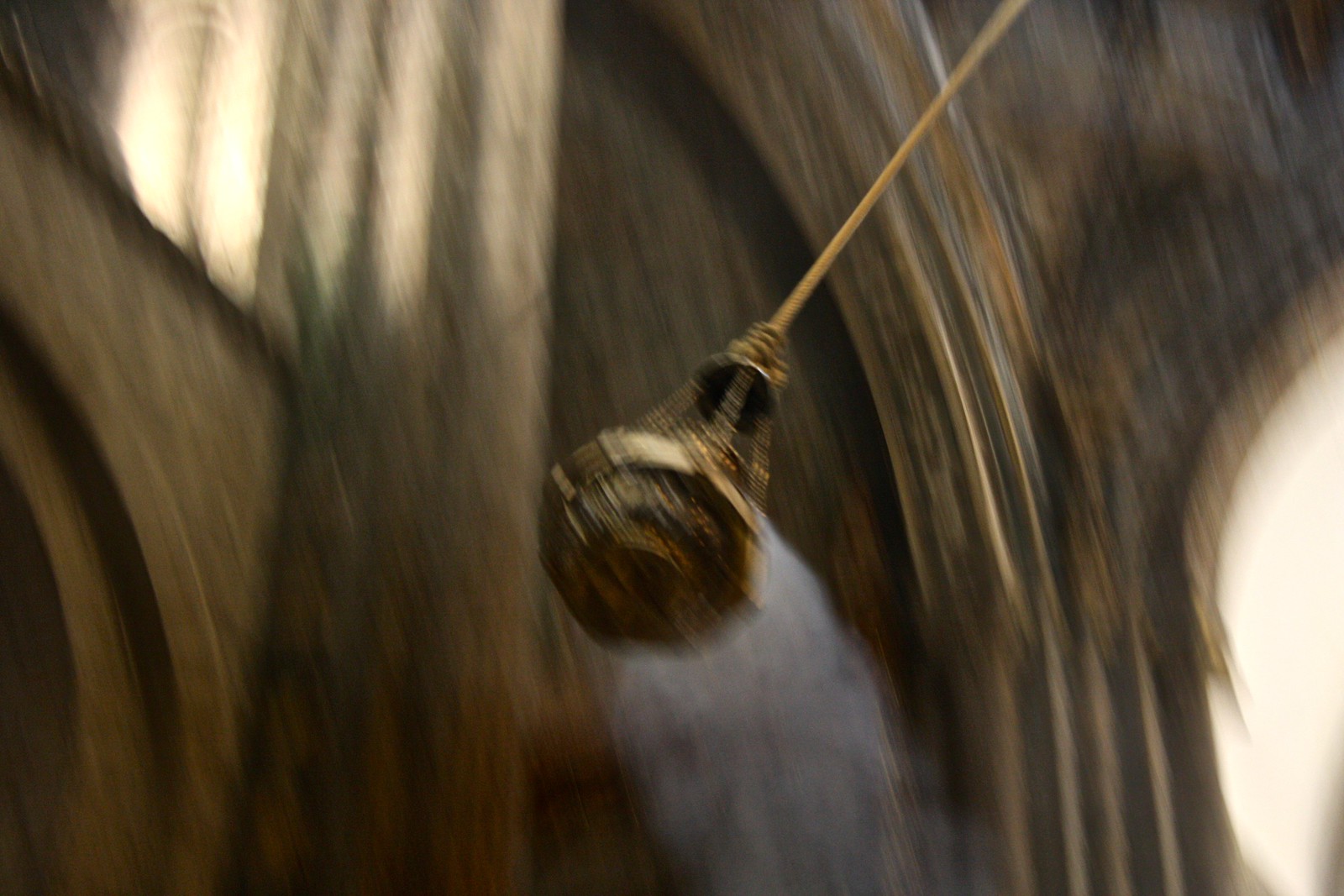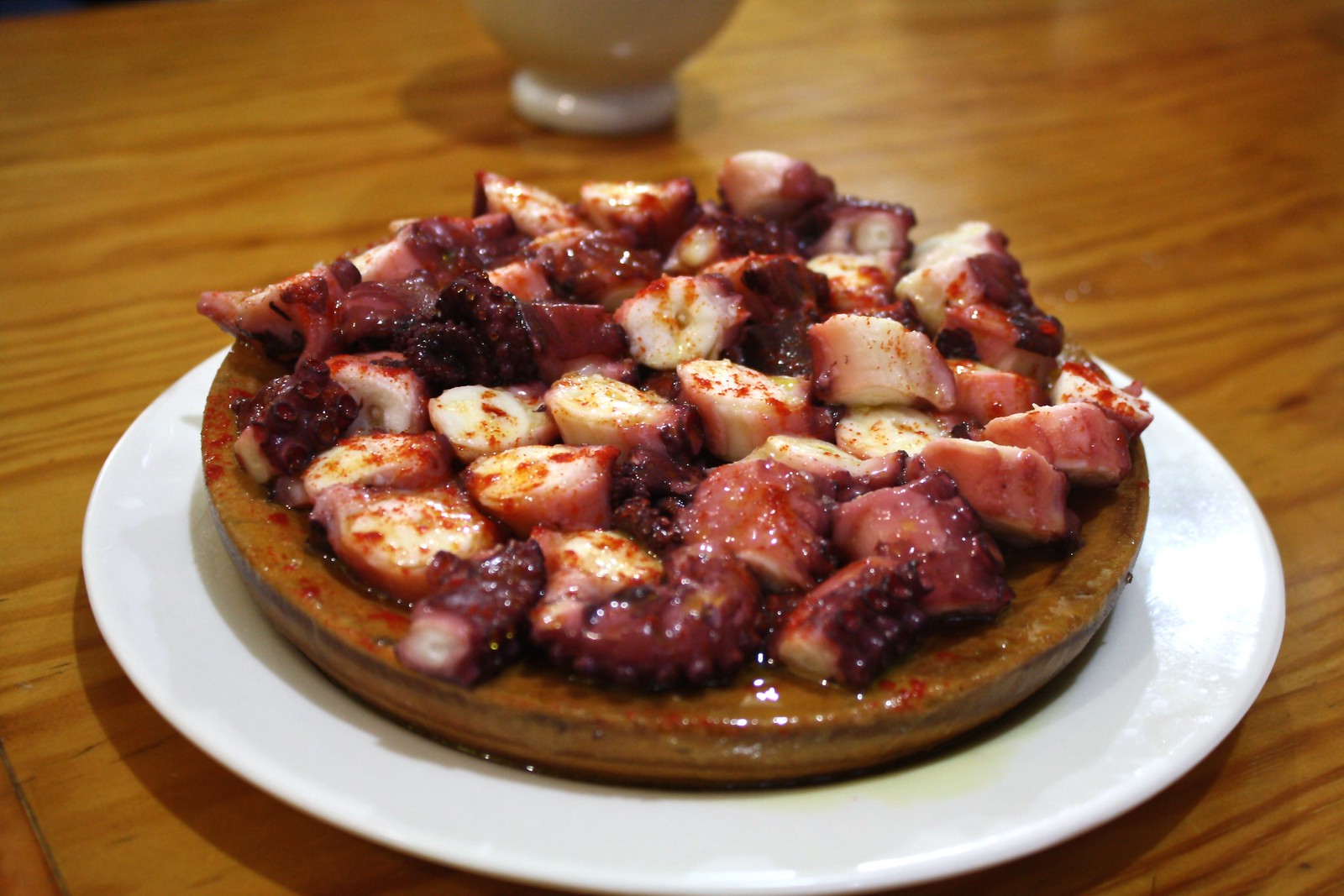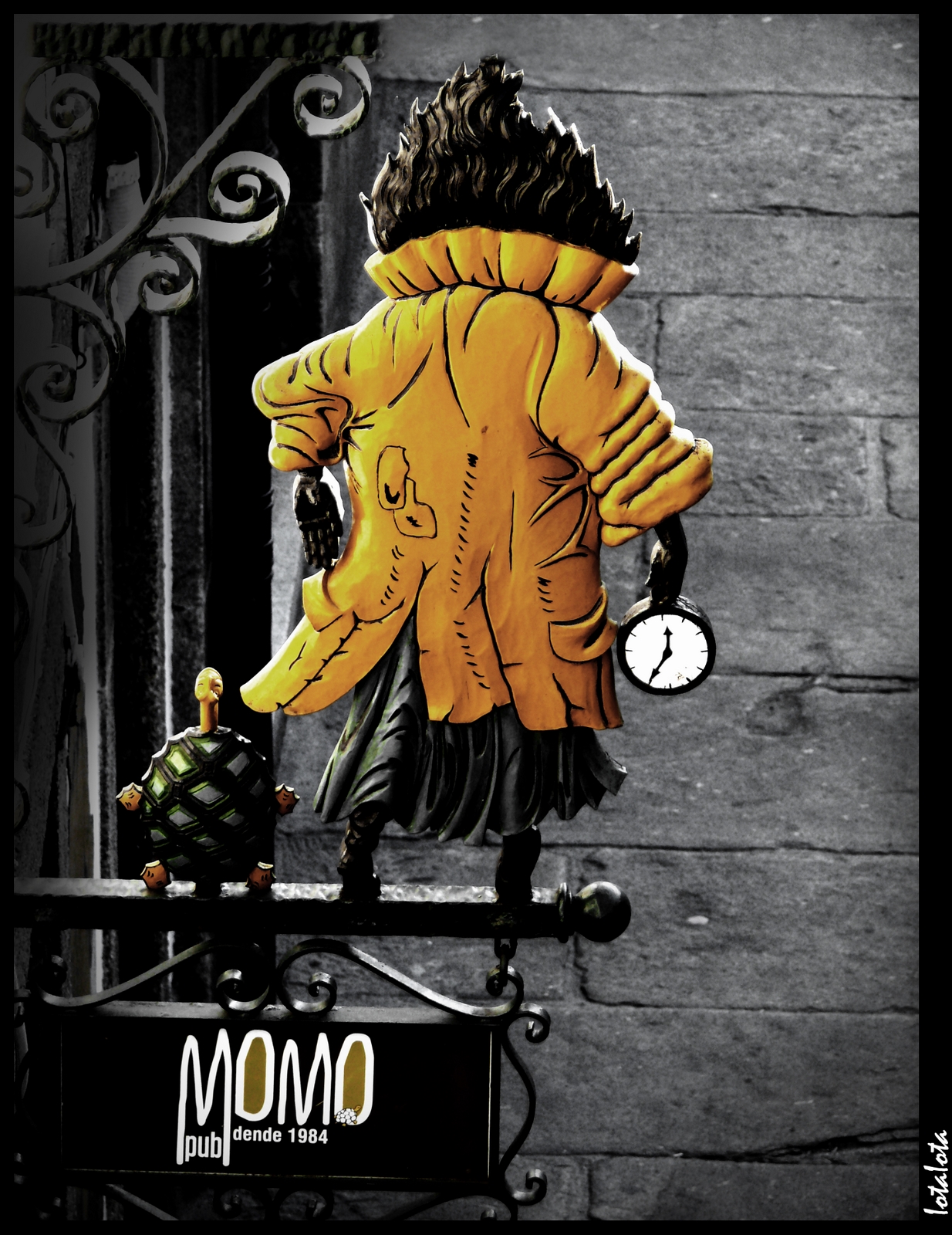How to Spend 24 Hours in Santiago de Compostela, Spain
During the two years I spent living and working in Santiago de Compostela, I hosted around half a dozen or so friends in this rainy northwest corner of Spain and showed them around the comfortable, lively place I had grown to call home.
Santiago is a wonderful city, but I’ll be totally honest with y’all—you can see the city in a single day. I usually took friends who visited me on daytrips to A Coruña or the hot springs in Ourense after we had gotten our fill of Santi-town. But that fill was almost always overflowing with endless tapas, walks through parks, and ancient granite churches.
I don’t live in Santiago anymore, having traded cathedrals for cactuses and tapas for tacos in Phoenix. But even though I can’t personally lead you on a jam-packed itinerary through the Galician capital, I’ve put together a guide you can follow to make sure you have a visit that leaves you dazzled, relaxed, and—most importantly—full.
Before we start our day, make sure you’ve got a good pair of comfortable walking shoes, as days like this in hilly Santiago can easily surpass 10,000 steps, a sturdy umbrella, and lots of cash so you can quickly pay for your coffee without having to wait for your credit card to get charged.
It’s time for breakfast, and you’re gonna need some serious caffeination to get you through this itinerary that stops 6 hours short of actually being 24 hours long. From Praza de Galicia, take the north-south Rúa do Hórreo street until you get to Café Venecia, about one block down the hill on the left side at Nº 27. Although head barista Óscar de Toro serves up the finest coffee in town, this café isn’t overrun by hipsters but instead attracts everyone from blue-collar workers to men in suits and always has a stack of newspapers to flip through and a good wifi connection. You can’t go wrong with the standard café con leche here as they don’t use torrefacto coffee (i.e., it doesn’t taste burnt as coffee usually does in Spain), but if you’re feeling ~third wave~ you can even request a Chemex!
Head on over to the cathedral, the burial place of the supposed remains of the Apostle St. James and the destination of countless pilgrims on the Camino de Santiago over the past thousand years. This church has taken many forms across the centuries, from a plain Romanesque sanctuary to a larger-than-life gilded Baroque altarpiece, and there’s no better way to appreciate its many additions and architectural styles than by going on a rooftop tour. You’ll get to tromp around on top of the cathedral, get an up-close view of the bell towers, and take 360º photos of the city.
The historic core of Santiago is a destination unto itself (and a World Heritage Site). Spend this hour simply wandering through the town’s granite-paved streets, getting lost in alleys with names like Entrerrúas (“Between the Streets”) and Sae Se Podes (“Leave If You Can”), or stepping into parish chapels and soaring monastery churches.
By this hour, the nuns at the San Paio de Antealtares convent should have their window open for business. You can find your way to their east-facing entryway by heading east from the cathedral until you get to Praza de Cervantes, head south along the shopping street Rúa do Preguntoiro, and take a right after Churrería Metate. Push the buzzer and a friendly nun will slide open the window and ask what you’d like to order. Their tartas de Santiago (local almond cakes) are a little dry but unbelievably fresh. I recommend getting something a little more manageable: pastas de té (assorted shortbread cookies) or almendrados (chewy almond cookies).
While you explore the old town, meander on over to the Mercado de Abastos, the city’s main market for fresh seafood, meat, and produce. Gawk at the exotic selection of seafood—monster-mouthed monkfish, long-legged spider crab, and beaky barnacles—and salivate over the links of paprika-spiced chorizo hanging from the ceiling. Smile and nod at the apron-clad ladies from the countryside who try to get you to buy small local potatoes, disc-shaped onions, and bright-green Padrón peppers (some are spicy, others aren’t, as the saying goes).
If it’s sunny and dry outside, pick up ingredients for a quality picnic: a label-less bottle of “homemade” wine, half a loaf of moist Galician bread, a healthy wedge of smooth tetilla cheese, some slices of cured ham or chorizo, a portion or two of empanada (Galician meat pie—ask for bacalao con pasas or cod with raisins), and maybe some juicy strawberries or cherries if they’re in season.
Lunchtime is rapidly approaching, so whet your appetite with a very Spanish aperitif, vermouth: fortified, aromatized wine served on the rocks with orange slices. Just a few streets over from the market you can find La Tita at Nº 46 on Rúa Nova. When you ask for a glass of the herby, spiced vermouth they pour from a tiny barrel on the counter, you’ll also receive a small plate of runny tortilla, some of the best Spanish potato omelet in the country.
You’ve got two possibilities to choose from for lunch. If it’s sunny, take your purchases from the market and lay out on the grass for a picnic in the park; I recommend the west-facing hillside of Belvís Park to the east of the old town or the monumental Bonaval Park to the northeast for the most scenic views.
If it’s rainy and miserable outdoors (count on it in winter), follow the Camino de Santiago northeast out of the old town onto Rúa de San Pedro and duck in to any of the restaurants on this street that offer a menú del día, a fixed-price set menu that includes an appetizer, an entrée, dessert, bread, and something to drink, usually for 10 to 15€.
By now, your morning coffee has probably worn off, so to fight the late-afternoon slump and post-meal drowsiness, start walking due west of the cathedral down the residential Rúa das Hortas until you get to Café Tertulia at Rúa do Pombal, Nº 2. This cozy coffee shop’s got whimsical wallpaper, mismatched tea cups, and welcoming baristas that will make you feel at home as you watch the car and foot traffic pass by. You could order some more coffee here, but I always like to get tea since they’ve got an extensive collection of loose-leaf tea that they serve in cute, cast-iron teapots (unlike most cafés, which charge you a euro for a stale teabag).
Leave Café Tertulia once you’re sufficiently caffeinated and walk a few blocks north to Galeras Park. Find the creek that winds through the willow trees, the Sarela River, and hug its banks until you leave the built-up area. The trail that runs alongside this stream takes you through peaceful woods and past bucolic family farms, and it ultimately meets up with the Camino de Fisterra, the extension pilgrimage that goes from Santiago to the sea. The Sarela River Trail makes for a perfect escape from the hordes of tourists and pilgrims that crowd the old town while also giving you a peek into a rural Galician lifestyle that lies just minutes outside urbanized Santiago.
Get to the cathedral as night begins to fall and make one great loop inside the church, checking out the side-chapels, paying your respects at the sepulcher, and hugging the statue of Santiago. Grab an up-front seat in the pews and await the 7:30pm pilgrim mass. If you’re here on a Friday, the cathedral chapter will most likely swing the botafumeiro, a human-sized silver thurible that shoots out incense smoke and perfumes the whole church. If you drop by any other day of the week, there’s still a chance you might get to see (and smell) it, as a group of pilgrims may havepaid a fee made a donation to have the botafumeiro swung across the transept.
Work up an appetite by going for a paseo or post-siesta stroll around Santiago’s most emblematic public park, the Alameda. This is the place to see and be seen…or to just get your daily jog in. Walk down the grand, tree-lined path and look to your right to take in those postcard-perfect views of the cathedral, but don’t forget to be on the lookout for statues of local authors like Ramón del Valle-Inclán or beloved Compostelan characters like the two Marías.
By now you’re most likely hungry. Simply follow the shells for the Camino de Santiago backwards, heading in a general northeast direction uphill along Rúa de San Pedro until you reach a busy intersection where half a dozen streets meet. Located inside a nondescript white building with a Coca-Cola sign is Bodegón Os Concheiros Pulpería, where you’re sure to have a delicious supper of Santiago’s best polbo á feira—boiled octopus topped with smoked paprika, salt, and olive oil. Drink no-name red wine out of white ceramic bowls and complement your wooden plate of octopus with mild Padrón peppers, cumin-flavored roasted ham, and chorizo-spiced pork nuggets.
Move on to Momo, a pub across the street from the market at Nº 23 on Rúa da Virxe da Cerca. Momo sprawls across several rooms and even includes a beer garden out back that overlooks Belvís Park. Ask for a glass of licor café with ice; this distinctive, syrupy liqueur is laced with black coffee and will give you a little boost to last you through the rest of the night.
Full disclosure: I wrote this as part of Accor Hotels’ 24 Hours In… promotion in which bloggers write a post or create a video about how they would spend 24 hours in their favorite city and compete to win a nine-night vacation exploring Paris, Amsterdam, and Berlin.
How would you spend 24 hours in your favorite city? Does this jam-packed itinerary for Santiago sound irresistible or overwhelming to you? Tell me below in the comments!
Santiago is a wonderful city, but I’ll be totally honest with y’all—you can see the city in a single day. I usually took friends who visited me on daytrips to A Coruña or the hot springs in Ourense after we had gotten our fill of Santi-town. But that fill was almost always overflowing with endless tapas, walks through parks, and ancient granite churches.
I don’t live in Santiago anymore, having traded cathedrals for cactuses and tapas for tacos in Phoenix. But even though I can’t personally lead you on a jam-packed itinerary through the Galician capital, I’ve put together a guide you can follow to make sure you have a visit that leaves you dazzled, relaxed, and—most importantly—full.
Before we start our day, make sure you’ve got a good pair of comfortable walking shoes, as days like this in hilly Santiago can easily surpass 10,000 steps, a sturdy umbrella, and lots of cash so you can quickly pay for your coffee without having to wait for your credit card to get charged.
8am
There’s a lot of ways you can get to Santiago: by bus, train, or airplane. Whichever method you use to arrive, catch a bright orange airport bus that connects the bus station, train station, and airport and get off at Praza de Galicia, a busy square at the center of the city.9am
It’s time for breakfast, and you’re gonna need some serious caffeination to get you through this itinerary that stops 6 hours short of actually being 24 hours long. From Praza de Galicia, take the north-south Rúa do Hórreo street until you get to Café Venecia, about one block down the hill on the left side at Nº 27. Although head barista Óscar de Toro serves up the finest coffee in town, this café isn’t overrun by hipsters but instead attracts everyone from blue-collar workers to men in suits and always has a stack of newspapers to flip through and a good wifi connection. You can’t go wrong with the standard café con leche here as they don’t use torrefacto coffee (i.e., it doesn’t taste burnt as coffee usually does in Spain), but if you’re feeling ~third wave~ you can even request a Chemex!
10am
Head on over to the cathedral, the burial place of the supposed remains of the Apostle St. James and the destination of countless pilgrims on the Camino de Santiago over the past thousand years. This church has taken many forms across the centuries, from a plain Romanesque sanctuary to a larger-than-life gilded Baroque altarpiece, and there’s no better way to appreciate its many additions and architectural styles than by going on a rooftop tour. You’ll get to tromp around on top of the cathedral, get an up-close view of the bell towers, and take 360º photos of the city.
11am
The historic core of Santiago is a destination unto itself (and a World Heritage Site). Spend this hour simply wandering through the town’s granite-paved streets, getting lost in alleys with names like Entrerrúas (“Between the Streets”) and Sae Se Podes (“Leave If You Can”), or stepping into parish chapels and soaring monastery churches.
By this hour, the nuns at the San Paio de Antealtares convent should have their window open for business. You can find your way to their east-facing entryway by heading east from the cathedral until you get to Praza de Cervantes, head south along the shopping street Rúa do Preguntoiro, and take a right after Churrería Metate. Push the buzzer and a friendly nun will slide open the window and ask what you’d like to order. Their tartas de Santiago (local almond cakes) are a little dry but unbelievably fresh. I recommend getting something a little more manageable: pastas de té (assorted shortbread cookies) or almendrados (chewy almond cookies).
12pm
 |
| Mackerel at the market |
While you explore the old town, meander on over to the Mercado de Abastos, the city’s main market for fresh seafood, meat, and produce. Gawk at the exotic selection of seafood—monster-mouthed monkfish, long-legged spider crab, and beaky barnacles—and salivate over the links of paprika-spiced chorizo hanging from the ceiling. Smile and nod at the apron-clad ladies from the countryside who try to get you to buy small local potatoes, disc-shaped onions, and bright-green Padrón peppers (some are spicy, others aren’t, as the saying goes).
If it’s sunny and dry outside, pick up ingredients for a quality picnic: a label-less bottle of “homemade” wine, half a loaf of moist Galician bread, a healthy wedge of smooth tetilla cheese, some slices of cured ham or chorizo, a portion or two of empanada (Galician meat pie—ask for bacalao con pasas or cod with raisins), and maybe some juicy strawberries or cherries if they’re in season.
1pm
Lunchtime is rapidly approaching, so whet your appetite with a very Spanish aperitif, vermouth: fortified, aromatized wine served on the rocks with orange slices. Just a few streets over from the market you can find La Tita at Nº 46 on Rúa Nova. When you ask for a glass of the herby, spiced vermouth they pour from a tiny barrel on the counter, you’ll also receive a small plate of runny tortilla, some of the best Spanish potato omelet in the country.
2pm
You’ve got two possibilities to choose from for lunch. If it’s sunny, take your purchases from the market and lay out on the grass for a picnic in the park; I recommend the west-facing hillside of Belvís Park to the east of the old town or the monumental Bonaval Park to the northeast for the most scenic views.
If it’s rainy and miserable outdoors (count on it in winter), follow the Camino de Santiago northeast out of the old town onto Rúa de San Pedro and duck in to any of the restaurants on this street that offer a menú del día, a fixed-price set menu that includes an appetizer, an entrée, dessert, bread, and something to drink, usually for 10 to 15€.
4pm
By now, your morning coffee has probably worn off, so to fight the late-afternoon slump and post-meal drowsiness, start walking due west of the cathedral down the residential Rúa das Hortas until you get to Café Tertulia at Rúa do Pombal, Nº 2. This cozy coffee shop’s got whimsical wallpaper, mismatched tea cups, and welcoming baristas that will make you feel at home as you watch the car and foot traffic pass by. You could order some more coffee here, but I always like to get tea since they’ve got an extensive collection of loose-leaf tea that they serve in cute, cast-iron teapots (unlike most cafés, which charge you a euro for a stale teabag).
5pm
Leave Café Tertulia once you’re sufficiently caffeinated and walk a few blocks north to Galeras Park. Find the creek that winds through the willow trees, the Sarela River, and hug its banks until you leave the built-up area. The trail that runs alongside this stream takes you through peaceful woods and past bucolic family farms, and it ultimately meets up with the Camino de Fisterra, the extension pilgrimage that goes from Santiago to the sea. The Sarela River Trail makes for a perfect escape from the hordes of tourists and pilgrims that crowd the old town while also giving you a peek into a rural Galician lifestyle that lies just minutes outside urbanized Santiago.
7pm
 |
| Botafumeiro swinging in the cathedral |
Get to the cathedral as night begins to fall and make one great loop inside the church, checking out the side-chapels, paying your respects at the sepulcher, and hugging the statue of Santiago. Grab an up-front seat in the pews and await the 7:30pm pilgrim mass. If you’re here on a Friday, the cathedral chapter will most likely swing the botafumeiro, a human-sized silver thurible that shoots out incense smoke and perfumes the whole church. If you drop by any other day of the week, there’s still a chance you might get to see (and smell) it, as a group of pilgrims may have
8pm
 |
| Strolling through the park |
Work up an appetite by going for a paseo or post-siesta stroll around Santiago’s most emblematic public park, the Alameda. This is the place to see and be seen…or to just get your daily jog in. Walk down the grand, tree-lined path and look to your right to take in those postcard-perfect views of the cathedral, but don’t forget to be on the lookout for statues of local authors like Ramón del Valle-Inclán or beloved Compostelan characters like the two Marías.
9pm
 |
| Platter of octopus |
By now you’re most likely hungry. Simply follow the shells for the Camino de Santiago backwards, heading in a general northeast direction uphill along Rúa de San Pedro until you reach a busy intersection where half a dozen streets meet. Located inside a nondescript white building with a Coca-Cola sign is Bodegón Os Concheiros Pulpería, where you’re sure to have a delicious supper of Santiago’s best polbo á feira—boiled octopus topped with smoked paprika, salt, and olive oil. Drink no-name red wine out of white ceramic bowls and complement your wooden plate of octopus with mild Padrón peppers, cumin-flavored roasted ham, and chorizo-spiced pork nuggets.
11pm
Supper may be over, but the night is young, my friend. Grab a glass of red Mencía at the cozy O Filandón (Rúa da Acibechería, 6), a literal business-up-front-party-in-the-back establishment where you squeeze past the refrigerated charcuterie display at the entrance and place your drink order in the back. Seating in this narrow bar is limited, from a single four-top in a corner to a wooden bar that extends the length of a fireplace, but once you grab a chair, make sure to doodle or write funny messages on napkins and fasten them to the wall with toothpicks. At the very least, it will keep you occupied until your free tapa of freshly-sliced sausage and chorizo on bread arrives.12am
Thread your way through Santiago’s old town to Modus Vivendi, the city’s oldest bar de copas at Praza de Feixóo, Nº 1. It’s based in a converted horse stable and even today still smells a little dank inside, but that’s honestly par for the course for a humid basement in Galicia. Grab a mojito or a caipirinha here and take in the atmosphere of the most authentic cocktail bar in town. |
| (Source: Juan Vilas CC BY-ND 2.0) |
Move on to Momo, a pub across the street from the market at Nº 23 on Rúa da Virxe da Cerca. Momo sprawls across several rooms and even includes a beer garden out back that overlooks Belvís Park. Ask for a glass of licor café with ice; this distinctive, syrupy liqueur is laced with black coffee and will give you a little boost to last you through the rest of the night.
2am
O.K., so this isn’t quite 24 total hours, but at this point you could either head off to bed with six hours to spare, or you could keep exploring the city by night, now that nightclubs have begun to open up. It’s totally up to you—but I need my beauty sleep, so I’m calling it a night.Full disclosure: I wrote this as part of Accor Hotels’ 24 Hours In… promotion in which bloggers write a post or create a video about how they would spend 24 hours in their favorite city and compete to win a nine-night vacation exploring Paris, Amsterdam, and Berlin.
How would you spend 24 hours in your favorite city? Does this jam-packed itinerary for Santiago sound irresistible or overwhelming to you? Tell me below in the comments!
